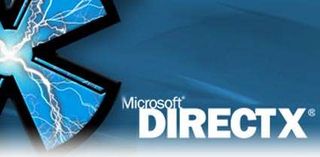What Direct3D 10 Is All About
Digging Into DirectX 10

Time flies when you are having fun, and DirectX 9 has certainly given us plenty of that. We have been playing games on the DirectX 9 application programming interface (API) since December of 2002 - almost four years now. While many use the term "DirectX" when talking about graphics, the DirectX standard is actually a group of APIs for various aspects of the gaming experience, of which graphics is one. Big titles such as Half-Life 2, F.E.A.R., Battlefield 2, and Oblivion use the current version, which is 9.0c.
There are three core areas in DirectX: input devices, audio and video. The table below shows a list of the APIs in the current build.
| Input Devices | |
|---|---|
| DirectInput | This is an API for input devices including keyboards, mice, joysticks, game pads, and force-feedback enabled devices. Included in this API is the functionality of the Xbox360 controller when used on a PC with Windows XP SP1 or later. |
| Audio | |
| DirectSound | This is the low level hardware API that interfaces between applications and the sound card. Hardware buffers can be manipulated using this API, as well as the volume, pitch and pan of individual sounds. |
| DirectMusic | This is a higher level API that can mix multiple sounds. It can play MIDI as well as maintain the volume levels of multiple sounds and their runtime parameters. |
| Video | |
| Direct3D | This is the API that puts images on your screen. It's a low level interface that allows for the manipulation of 3D objects via hardware accelerators (graphics cards). |
| DirectDraw | While this was important in years past, the current build has taken 2D functionalities and incorporated them into Direct3D. |
For the remainder of this article we will be talking about what most people are most interested in: Direct3D. There are a lot of changes coming in DirectX 10. Direct3D 10 adds new features to deal with existing graphical problems, and tools to take on new rendering challenges. It also simplifies the 3D pipeline, which will help move bigger and better game titles out of the developers' studios and onto your PC.
Join our discussion on this topic
Don't miss our GeForce 8 Series Review:
GeForce 8800: Here Comes the DX10 Boom
Nvidia has been working with DX10 for as long as Microsoft has been developing the standard. Today, what we get is G80, otherwise known as GeForce 8800GTX. Unified DX10 shaders never looked better!
Stay on the Cutting Edge
Join the experts who read Tom's Hardware for the inside track on enthusiast PC tech news — and have for over 25 years. We'll send breaking news and in-depth reviews of CPUs, GPUs, AI, maker hardware and more straight to your inbox.
Most Popular

